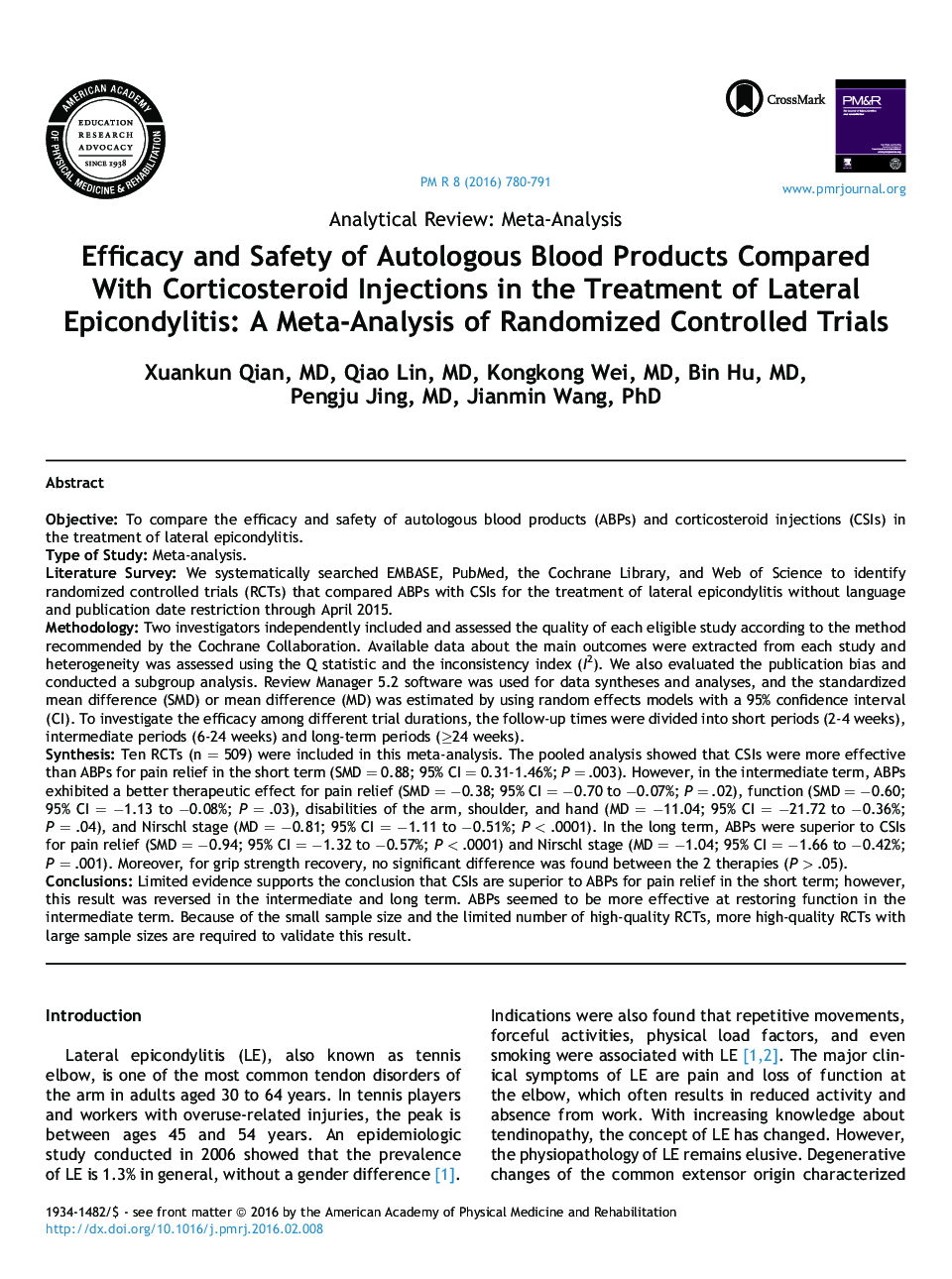| Article ID | Journal | Published Year | Pages | File Type |
|---|---|---|---|---|
| 2704621 | PM&R | 2016 | 12 Pages |
ObjectiveTo compare the efficacy and safety of autologous blood products (ABPs) and corticosteroid injections (CSIs) in the treatment of lateral epicondylitis.Type of StudyMeta-analysis.Literature SurveyWe systematically searched EMBASE, PubMed, the Cochrane Library, and Web of Science to identify randomized controlled trials (RCTs) that compared ABPs with CSIs for the treatment of lateral epicondylitis without language and publication date restriction through April 2015.MethodologyTwo investigators independently included and assessed the quality of each eligible study according to the method recommended by the Cochrane Collaboration. Available data about the main outcomes were extracted from each study and heterogeneity was assessed using the Q statistic and the inconsistency index (I2). We also evaluated the publication bias and conducted a subgroup analysis. Review Manager 5.2 software was used for data syntheses and analyses, and the standardized mean difference (SMD) or mean difference (MD) was estimated by using random effects models with a 95% confidence interval (CI). To investigate the efficacy among different trial durations, the follow-up times were divided into short periods (2-4 weeks), intermediate periods (6-24 weeks) and long-term periods (≥24 weeks).SynthesisTen RCTs (n = 509) were included in this meta-analysis. The pooled analysis showed that CSIs were more effective than ABPs for pain relief in the short term (SMD = 0.88; 95% CI = 0.31-1.46%; P = .003). However, in the intermediate term, ABPs exhibited a better therapeutic effect for pain relief (SMD = −0.38; 95% CI = −0.70 to −0.07%; P = .02), function (SMD = −0.60; 95% CI = −1.13 to −0.08%; P = .03), disabilities of the arm, shoulder, and hand (MD = −11.04; 95% CI = −21.72 to −0.36%; P = .04), and Nirschl stage (MD = −0.81; 95% CI = −1.11 to −0.51%; P < .0001). In the long term, ABPs were superior to CSIs for pain relief (SMD = −0.94; 95% CI = −1.32 to −0.57%; P < .0001) and Nirschl stage (MD = −1.04; 95% CI = −1.66 to −0.42%; P = .001). Moreover, for grip strength recovery, no significant difference was found between the 2 therapies (P > .05).ConclusionsLimited evidence supports the conclusion that CSIs are superior to ABPs for pain relief in the short term; however, this result was reversed in the intermediate and long term. ABPs seemed to be more effective at restoring function in the intermediate term. Because of the small sample size and the limited number of high-quality RCTs, more high-quality RCTs with large sample sizes are required to validate this result.
